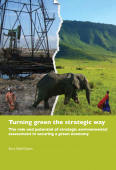
Strategic environmental assessment (SEA) is a powerful process for integrating environmental and linked social and economic concerns into policy-making, planning, programme development, mega projects and development decision-making. Over the last 20 years there has been increasing uptake of SEA around the world. More than 60 countries at all levels of development (including all 27 EU member states) now have legislation, policies, directives or regulations prescribing the application of SEA, and many more are introducing it as part of their policy toolkits – although it is not necessarily used effectively and many development actors are unaware of its function, value and potential. At the UN Rio+20 conference in 2012, the emergent green economy concept was a central theme, but it was agreed that nationally (as opposed to globally) driven approaches should be the way forward, so that green economy policies can be properly tailored. Attention has therefore turned to how SEA can help in promoting a transition to green economic development.
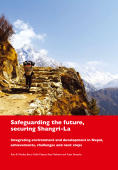
Nepal has abundant natural assets which underpin the economy and a very diverse ethnic and cultural heritage. These provide a strong platform for sustainable development. But the country suffers from the pervasive degradation of its environment and there is widespread poverty. As Nepal emerges from a period of conflict, the opportunity has emerged to safeguard and manage the environment wisely and build the future on a sustainable basis, and in this way secure a transition to a green economy.
This report, produced by leading Nepali thinkers, explores efforts over the past twenty years to mainstreaming the environment in planning and decision-making, and presents case studies which can act as springboards for further action. It also examines the drivers and challenges to such mainstreaming and makes recommendations for further action. The evidence presented makes a compelling case for change and investing in the environment.
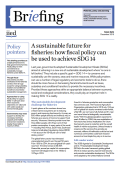
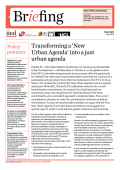
Habitat III — the United Nations Conference on Housing and Sustainable Urban Development — will take place in October in a new global context. Post-2015, international agreements and processes offer the opportunity for Habitat III to make more real transformative commitments in pursuit of a sustainable and just urban future than its predecessors. But if it is to do so, flaws in the revised Zero Draft of the New Urban Agenda must be urgently addressed. While IIED, IDS and DPU collectively welcome the current transformative commitments, the revised Zero Draft lacks both an overarching vision that recognises the vital links between the three commitments and a consistent approach to implementation.
The current contradictions threaten to make the commitments ineffective individual workstreams. To reach its transformative ambition, we argue that the final New Urban Agenda must make these connections, and suggest four specific ways in which it could achieve greater coherence and inclusivity.
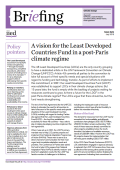
The 48 Least Developed Countries (LDCs) are the only country grouping to have a dedicated article in the UN Framework Convention on Climate Change (UNFCCC). Article 4.9 commits all parties to the convention to take full account of their specific needs and special situations with regard to funding and technology transfer. As part of efforts to implement this commitment, in 2001 the Least Developed Countries Fund (LDCF) was established to support LDCs in their climate change actions. But 15 years later, the fund is empty while the backlog of projects waiting for resources continues to grow. Is there a future for the LDCF in the post-Paris climate regime? The LDCs argue that there should be, but the fund needs strengthening.
